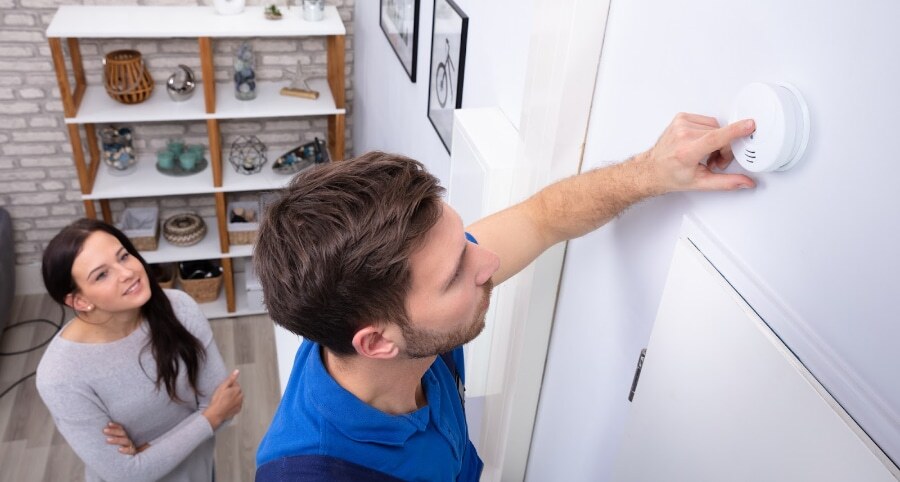Where to install carbon monoxide detectors in your Boston home

Carbon monoxide differs from typical risks residents face as you can’t identify it visually or by smell. Even though it’s not noticeable by human senses like smoke, fire, or flooding, you can still easily and effectively safeguard yourself with CO detectors. Find where to install carbon monoxide detectors in your Boston home and explore the perks of incorporating them in your whole-home security plan.
Where is CO found?
Owing to its lack of color and odor, carbon monoxide is frequently referred to as the silent killer. It emerges as a result of an incomplete burning of fuels in common appliances like furnaces, generators, gas stoves, and fireplaces. Most households won’t experience difficulties with their fuel-powered appliances if they maintain them properly. But if you forget about maintenance or don’t have necessary ventilation, an accumulation of this potentially life-threatening gas can take place.
Early indications of carbon monoxide poisoning include headaches, dizziness, nausea, and vomiting. These typically arise at low quantities of CO. Being exposed to higher levels for a greater period can cause cardiopulmonary arrest and death.
Tips on where to install Boston carbon monoxide detectors
Every home need to have a minimum of one CO detector. In truth, you should place them on all floors, and that includes basements where some fuel-burning appliances are situated. Utilize these tips on where to install Boston carbon monoxide detectors:
-
Install one within 10 feet of sleeping quarters. This location is vital, so put it here when you only use a single carbon monoxide detector.
-
You ought to have a CO detector on every story of your house, particularly on floors with gas-burning appliances.
-
To prevent false alarms, place them no less than 10 feet from producers of carbon monoxide, like fireplaces. A non-hazardous amount of CO may be released when fuel-burning appliances start up.
- Avoid placing next to entryways and windows, as exterior air will reduce the unit’s effectiveness.
-
Place CO detectors in spaces above garages.
As you would with smoke alarms, inspect your CO units per manufacturer guidelines, wipe away dust and grime as needed, and avoid mistakenly placing something next to them. As a general rule, replace your detectors every 5-6 years.
Enhance safety by including CO detectors in your home security system
Present-day home security systems provide more functionality than at any time before. In fact, you can add CO detectors and other safety devices right into your system. You and your monitoring agents will be contacted when your alarm detects danger. This backup is fantastic in the event you don’t hear the alarm or if you’re not home.
Enhance safety by including CO detectors in your home security system
Present-day home security systems provide more functionality than at any time before. In fact, you can add CO detectors and other safety devices right into your system. You and your monitoring agents will be contacted when your alarm detects danger. This backup is fantastic in the event you don’t hear the alarm or if you’re not home.
Get CO detectors with your Vivint smart home in Boston